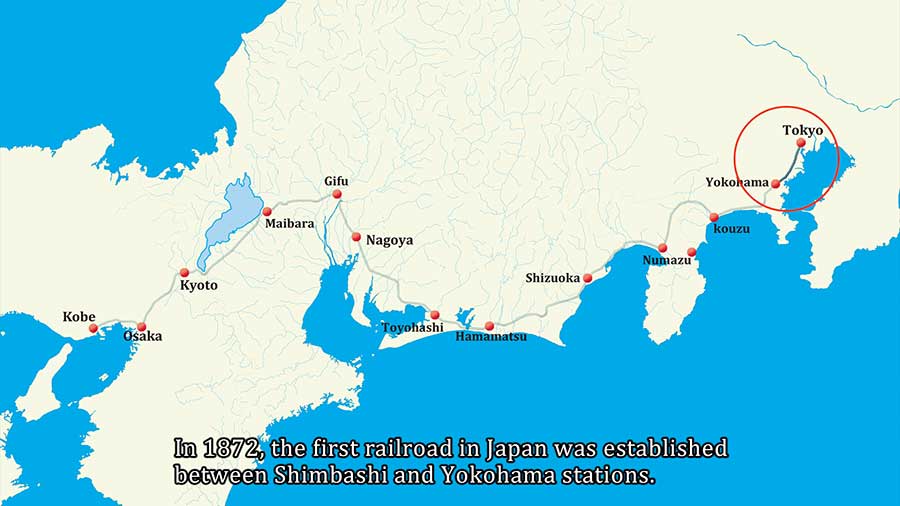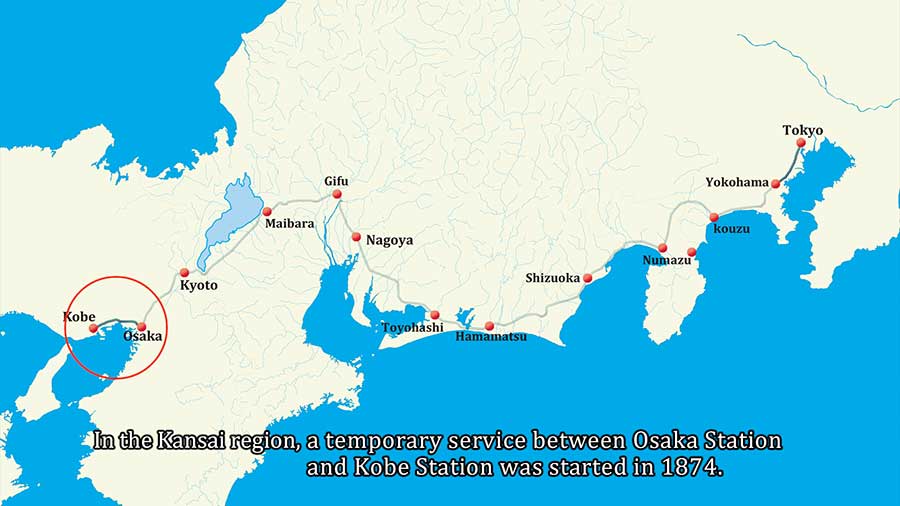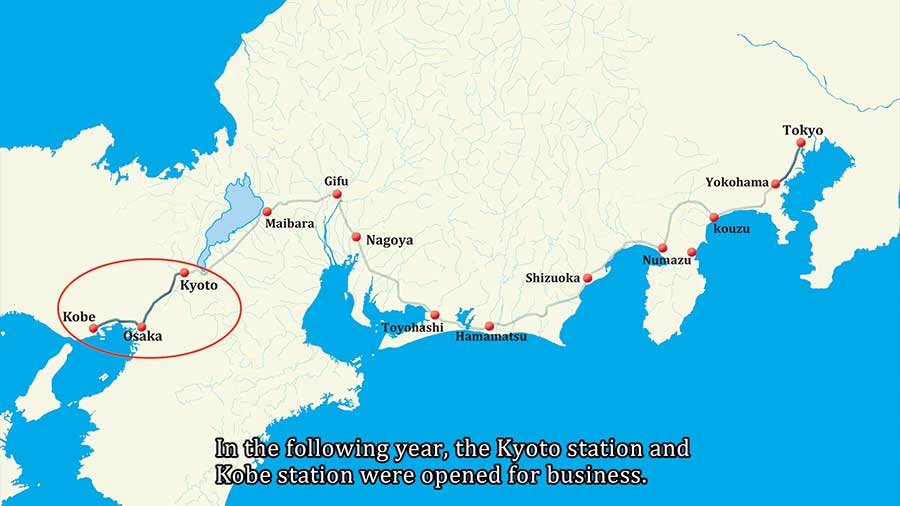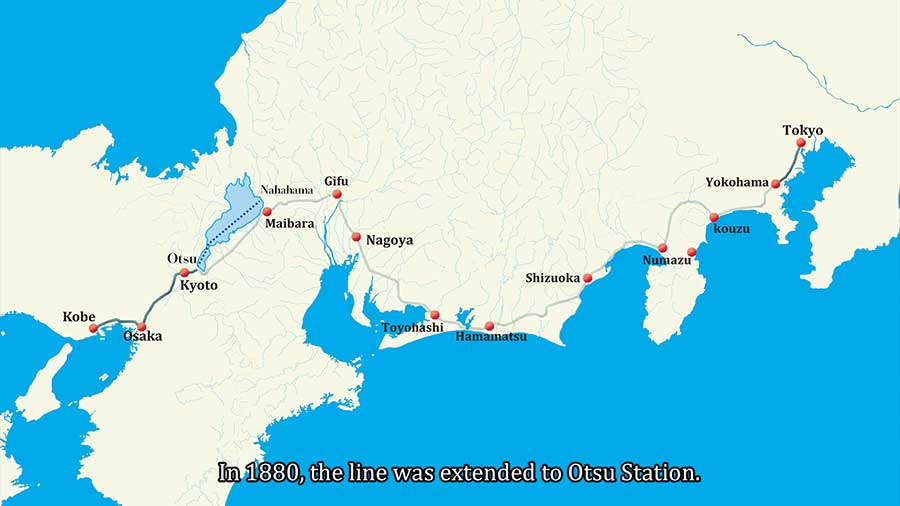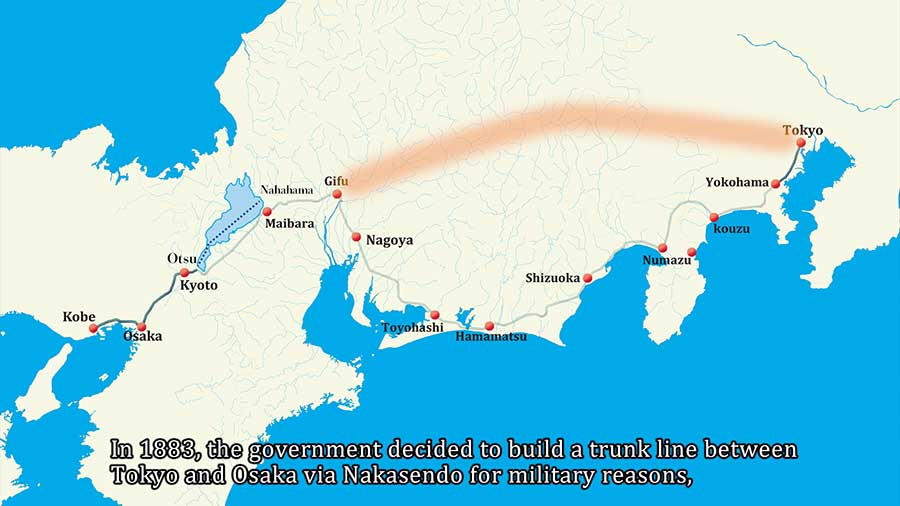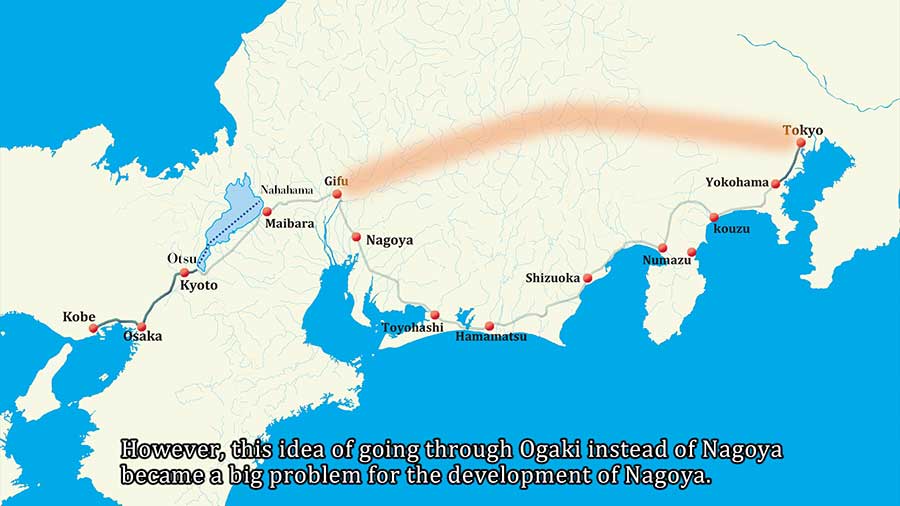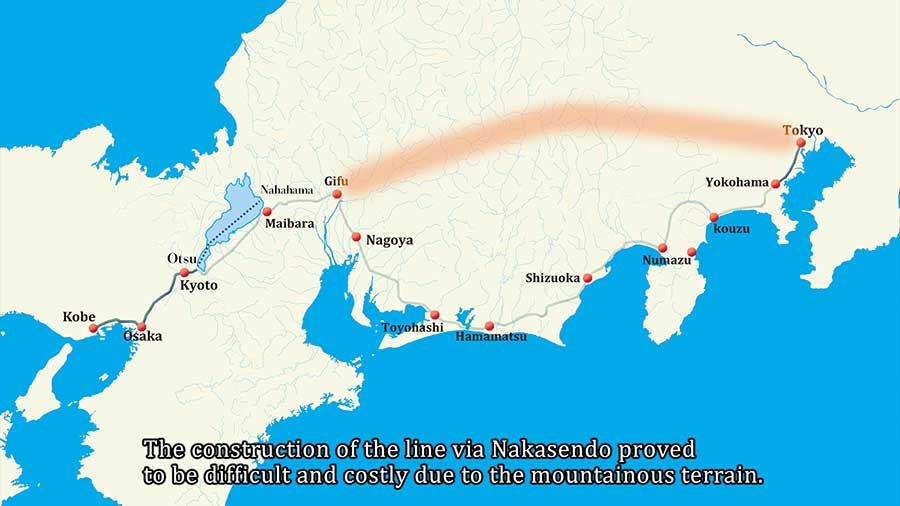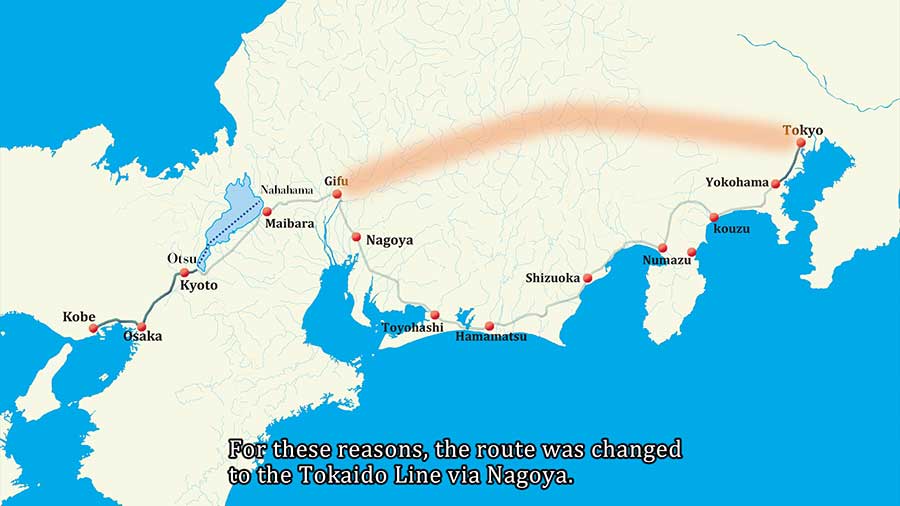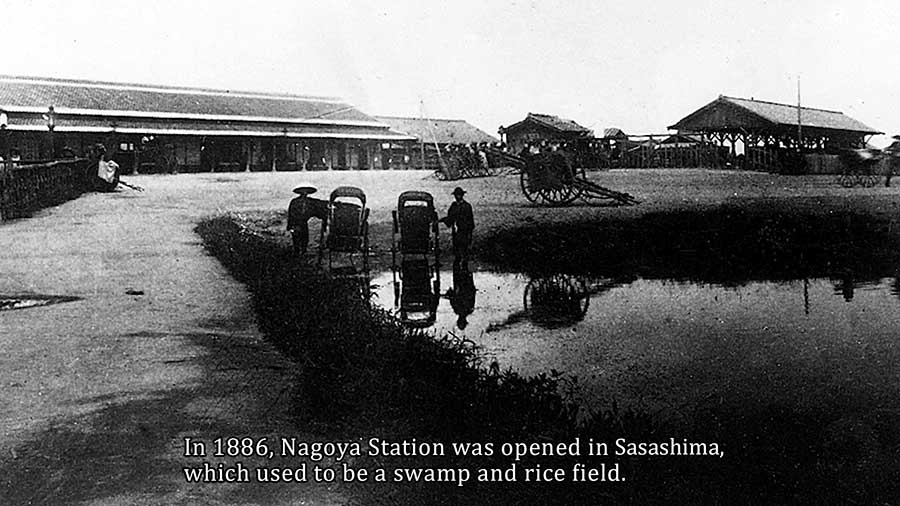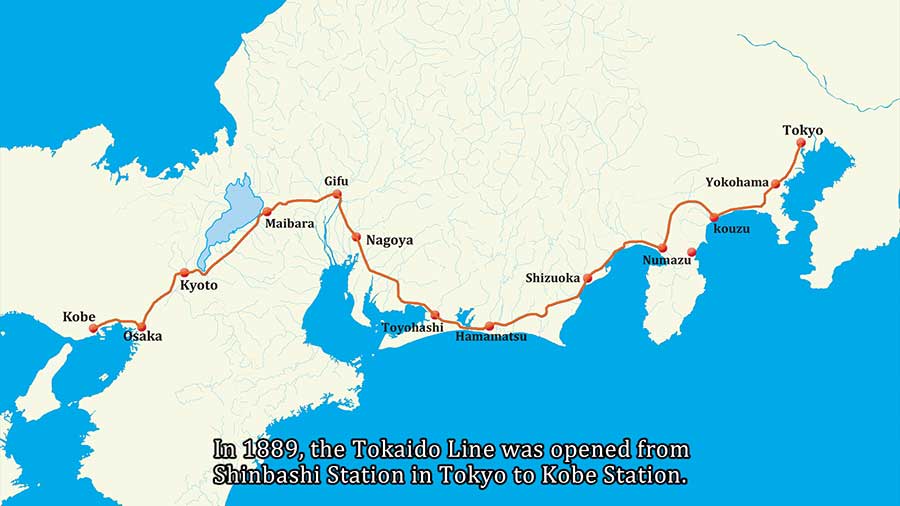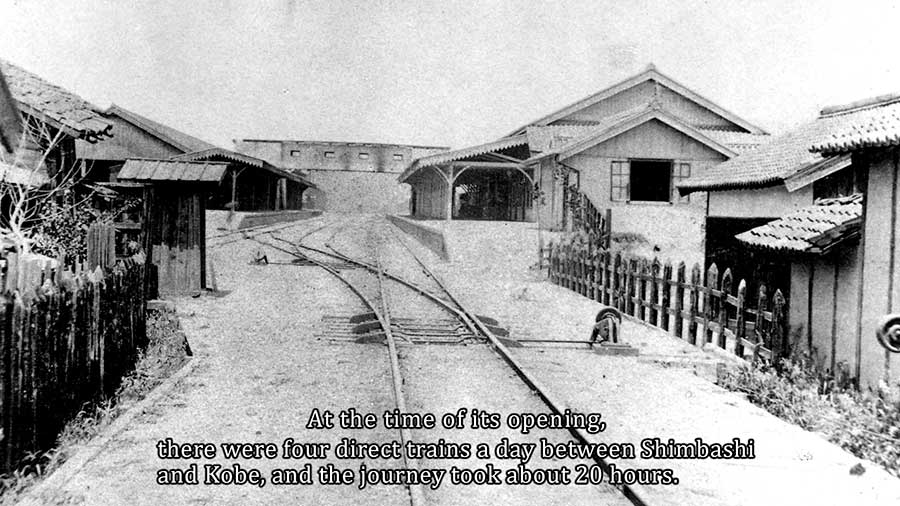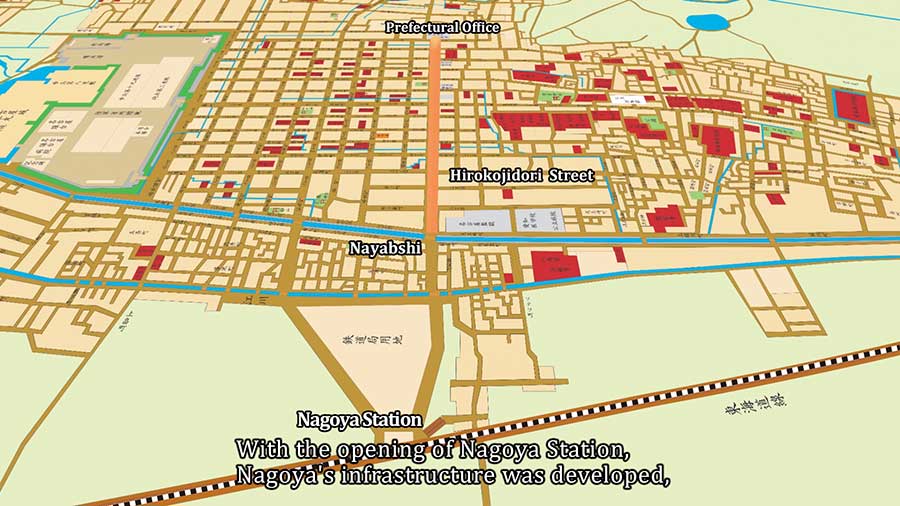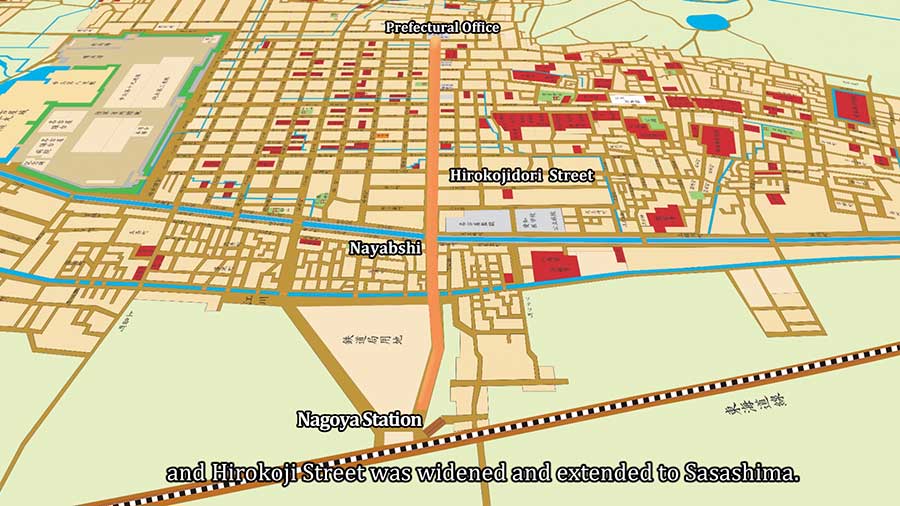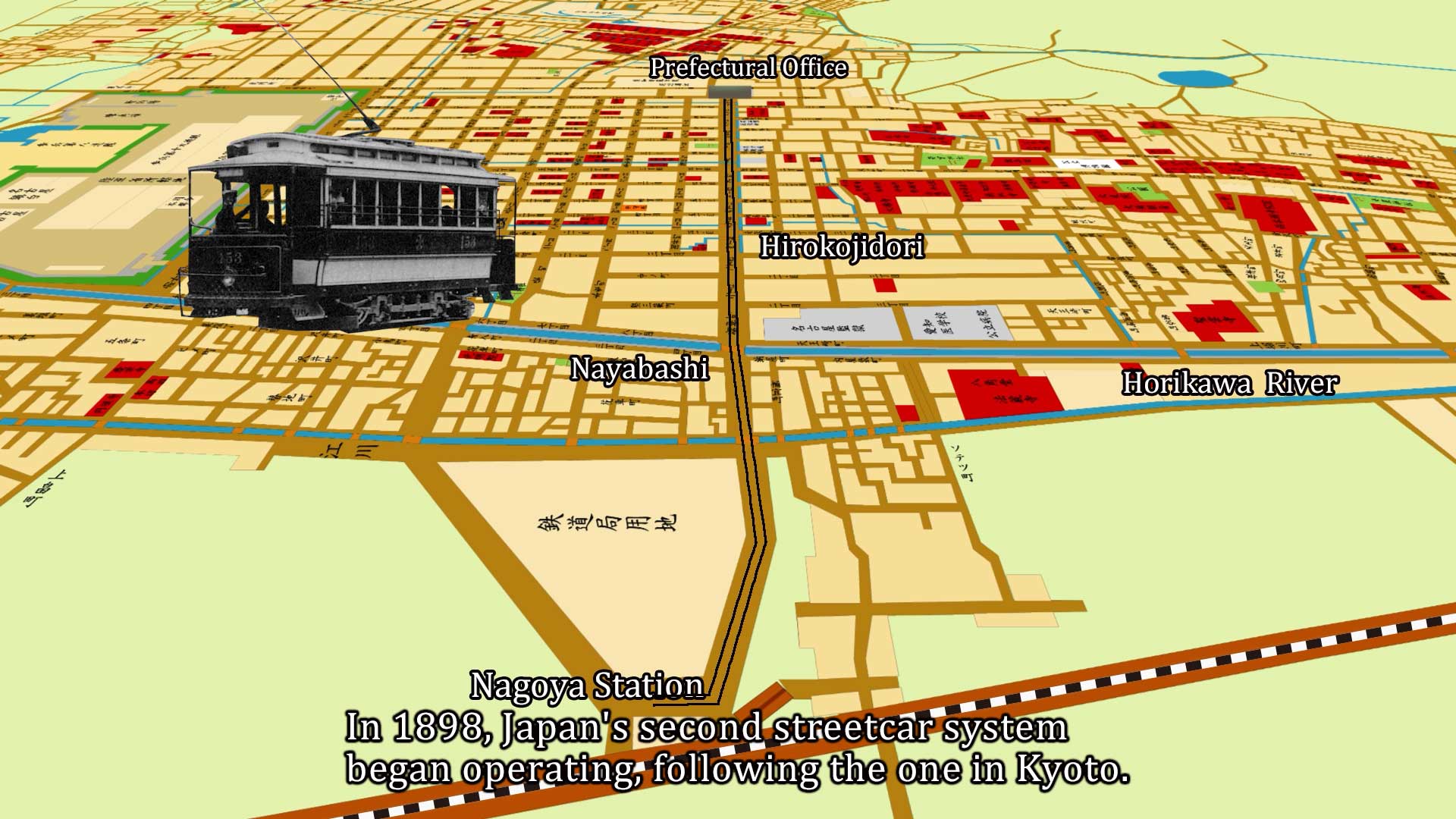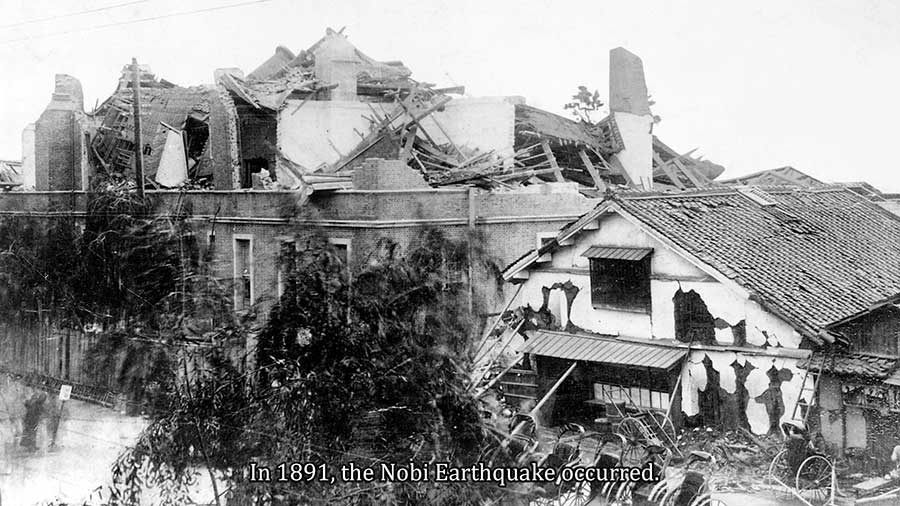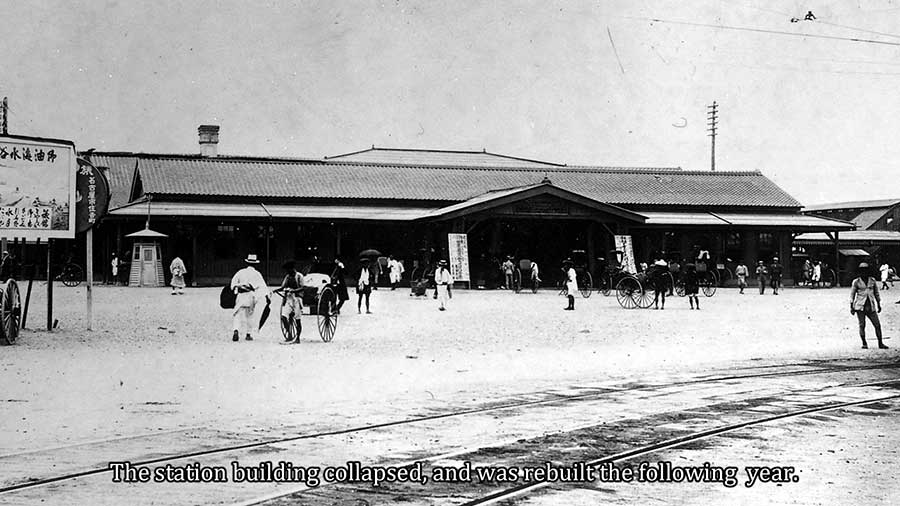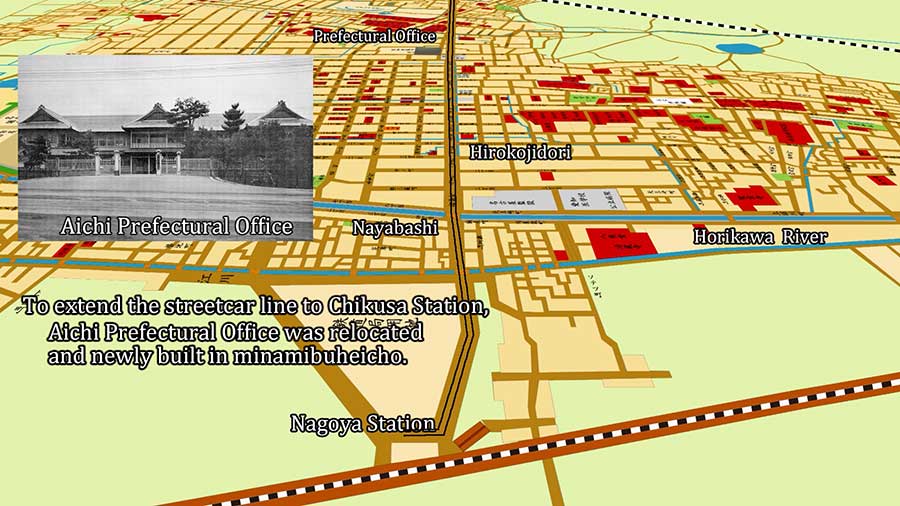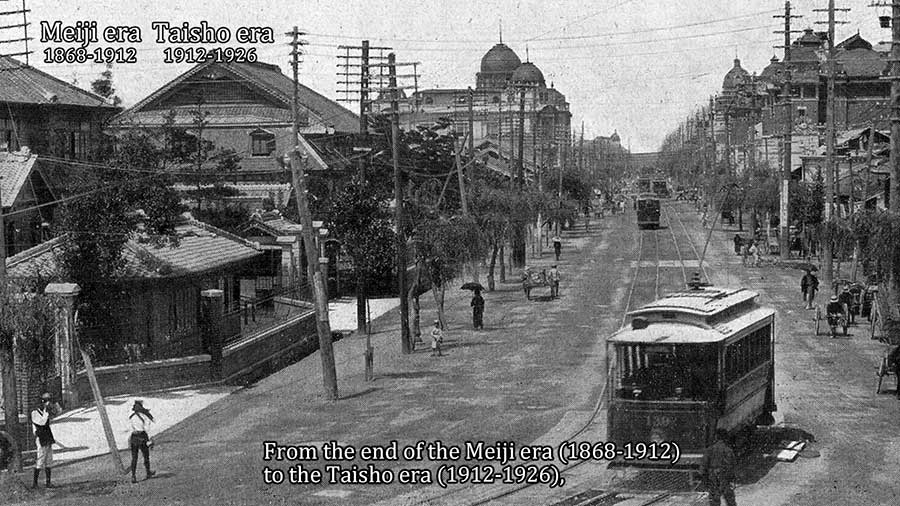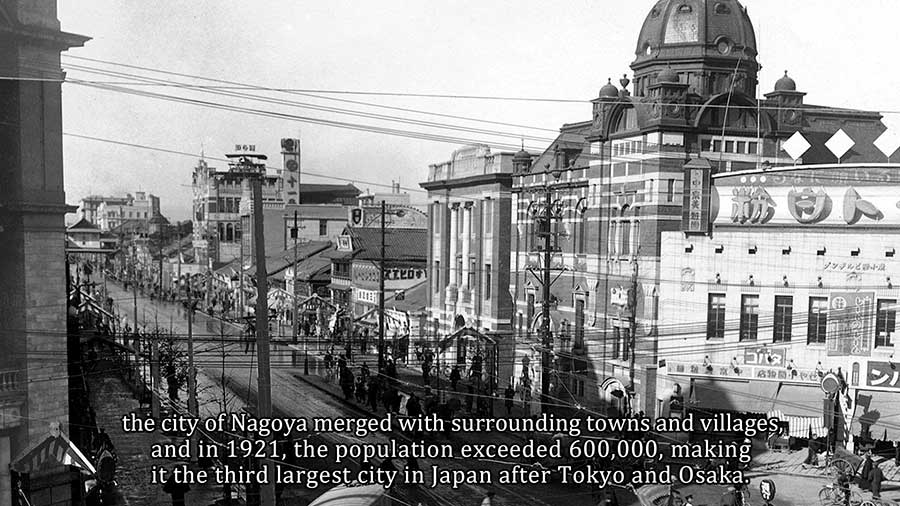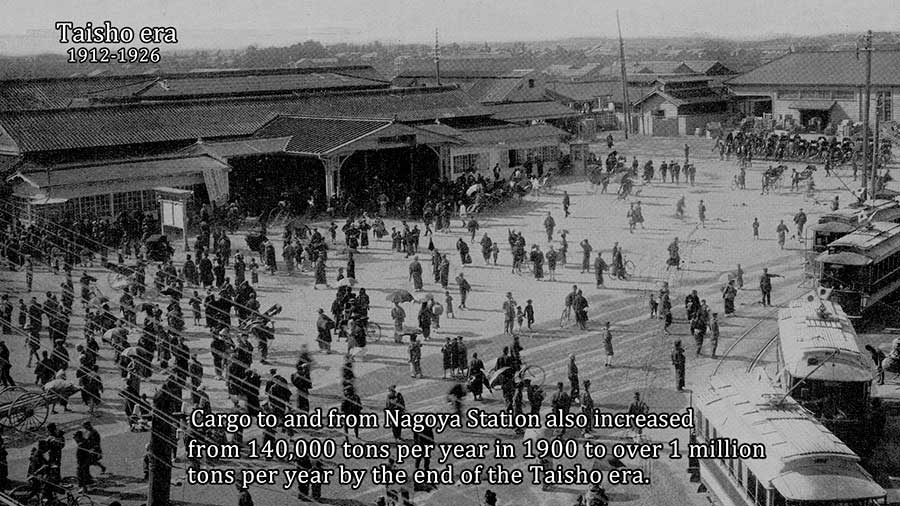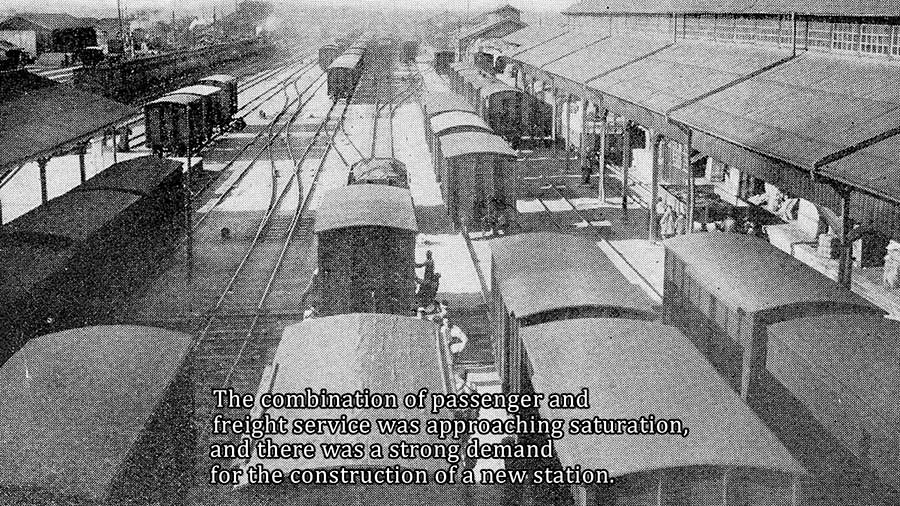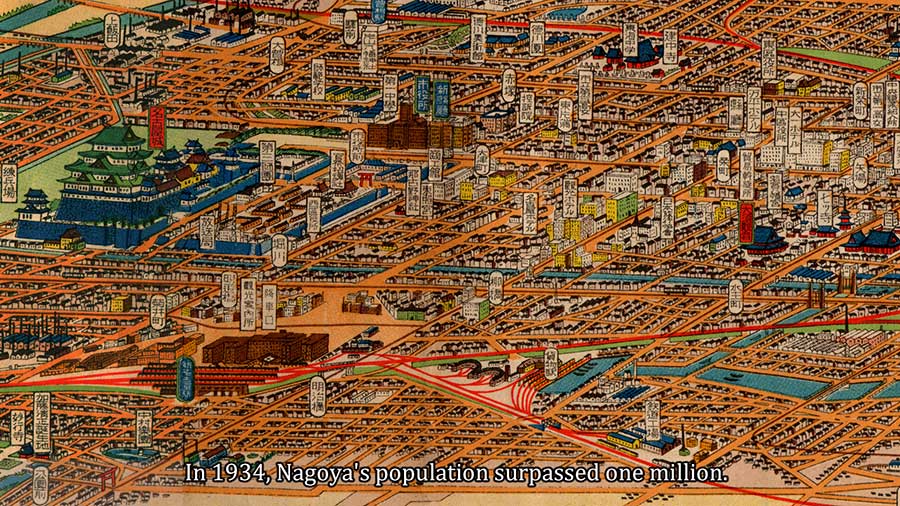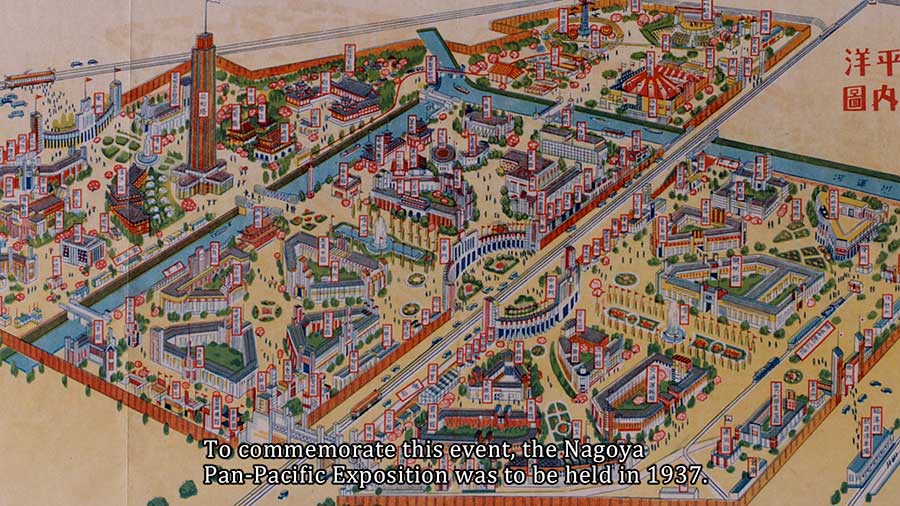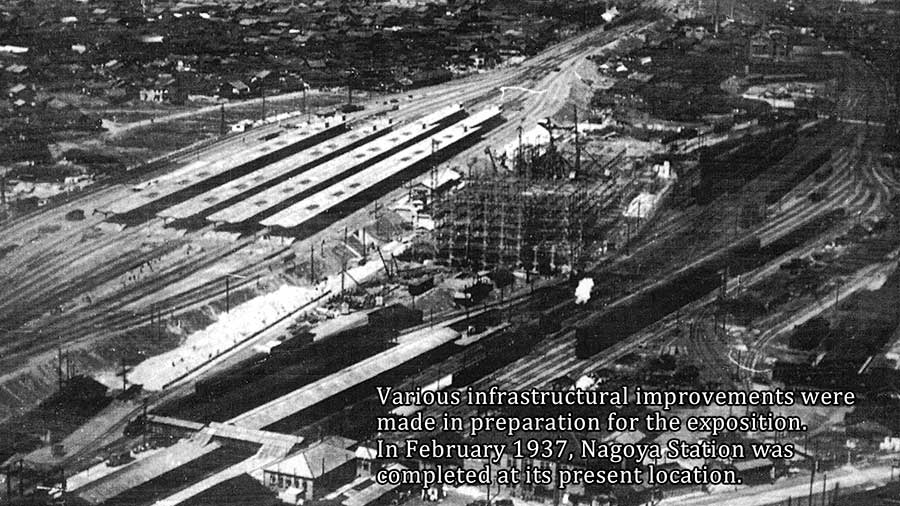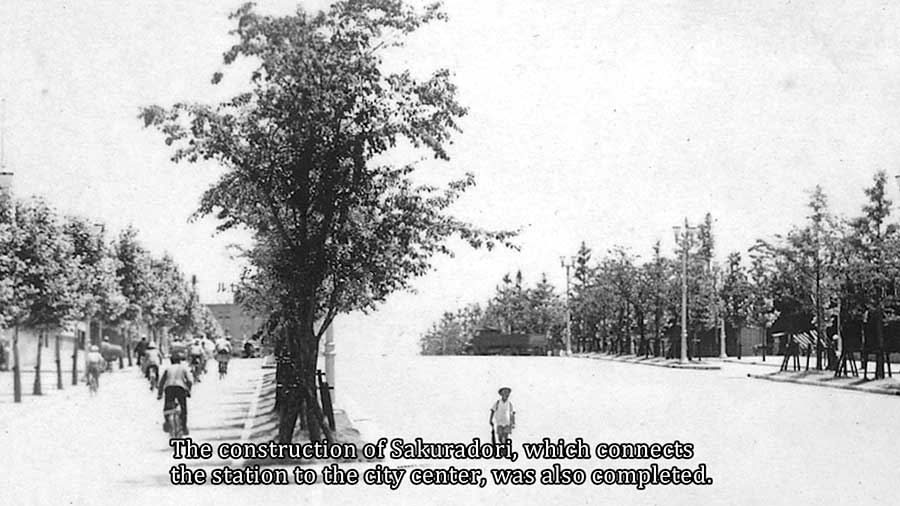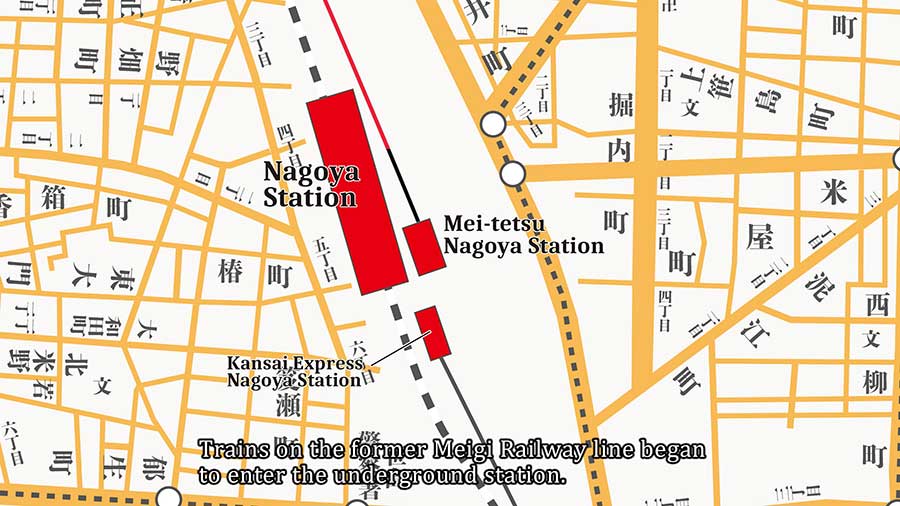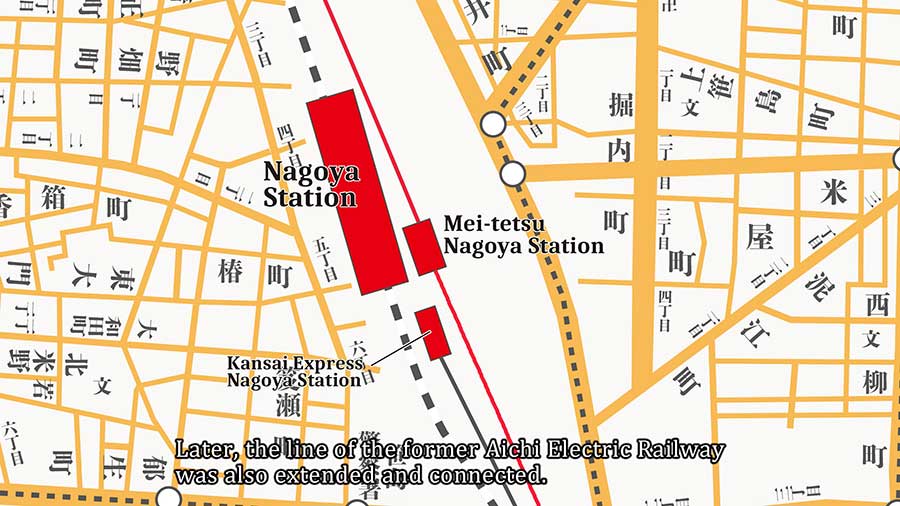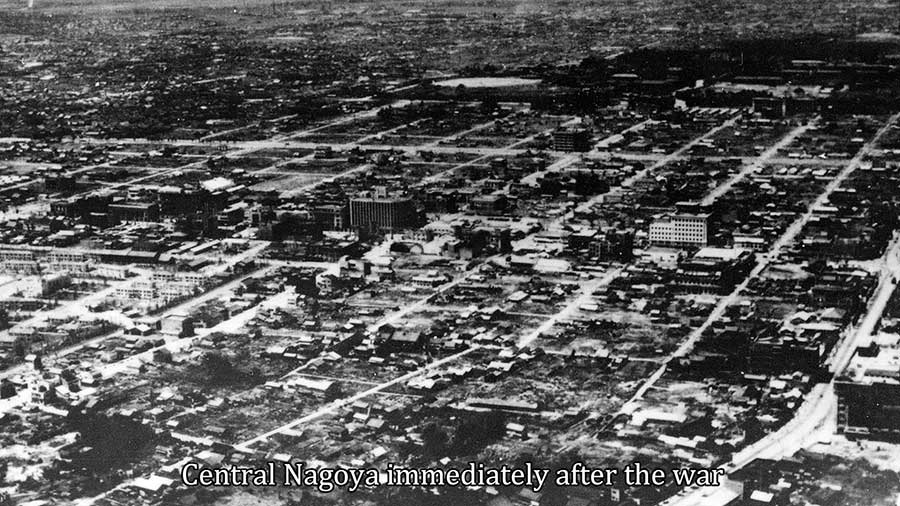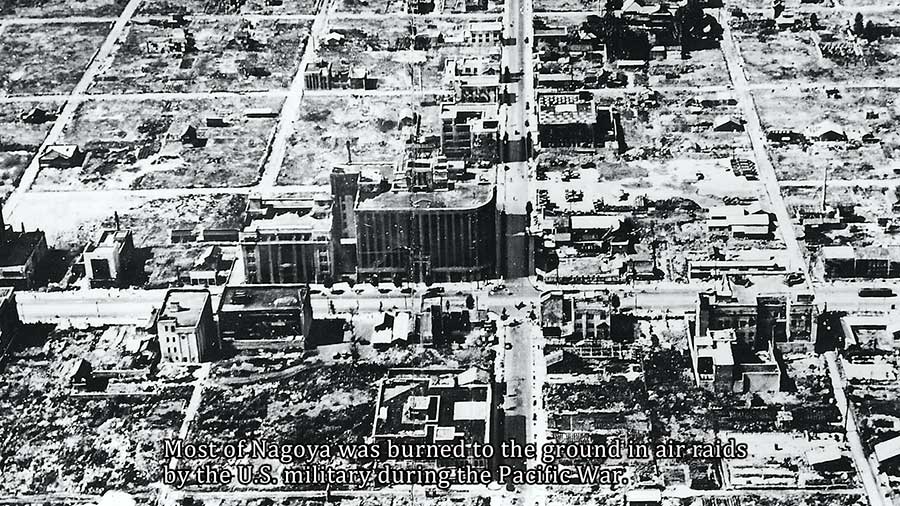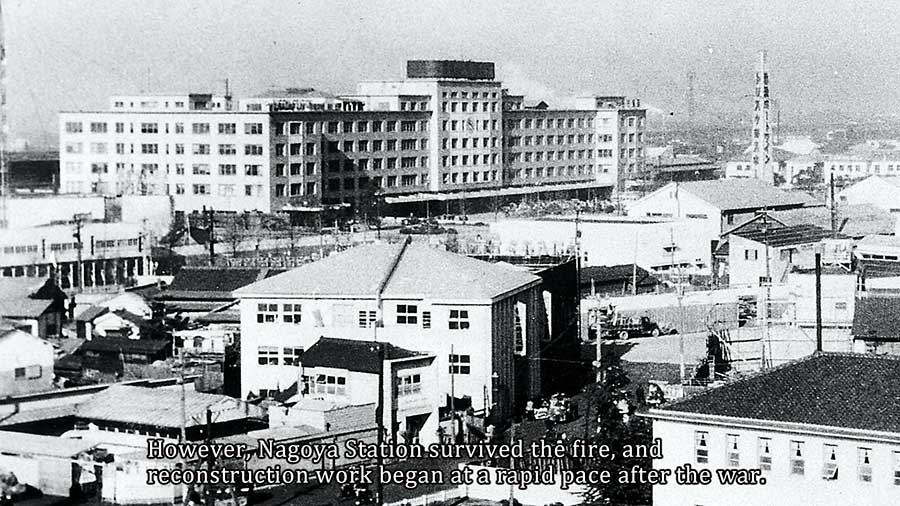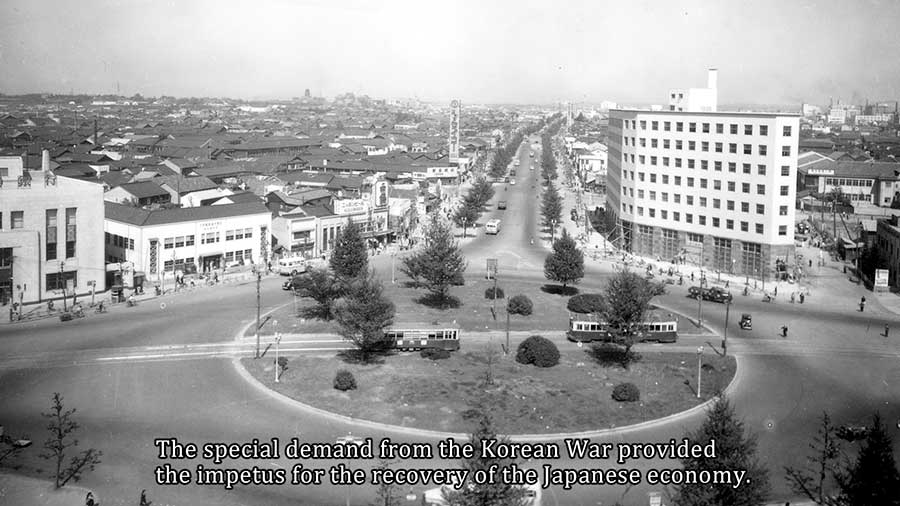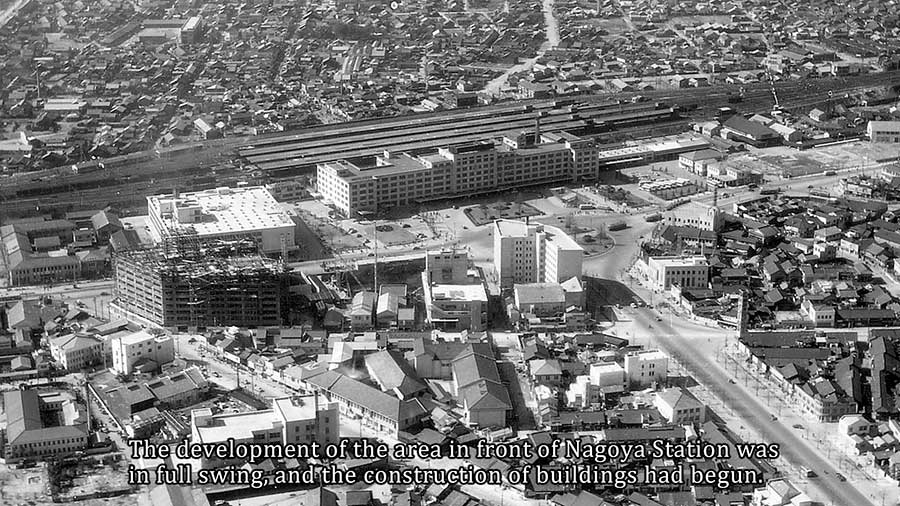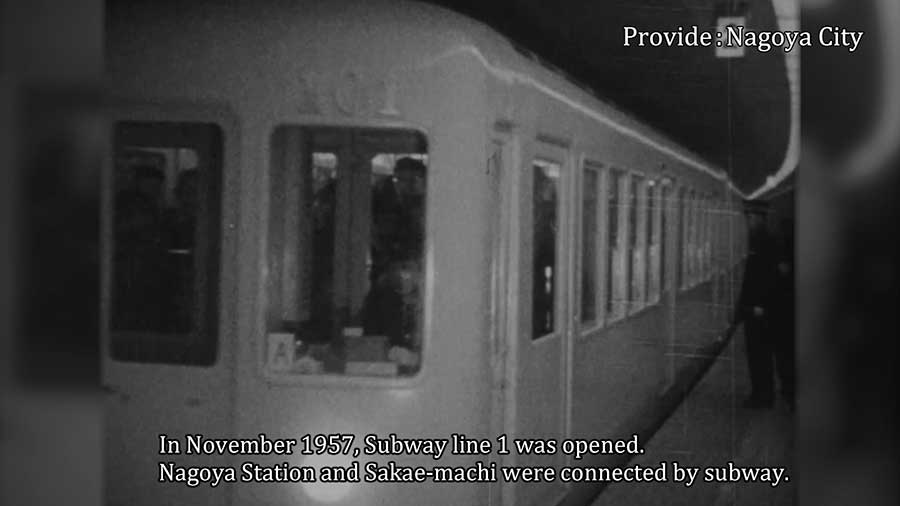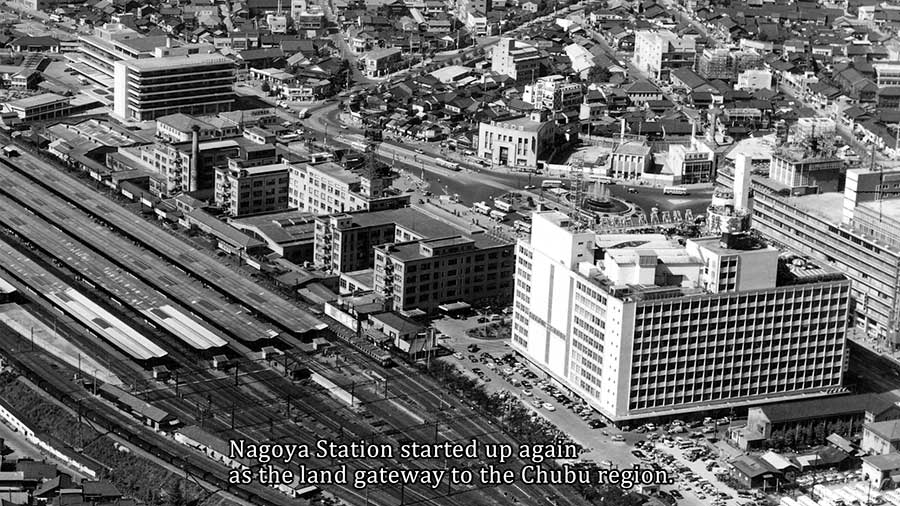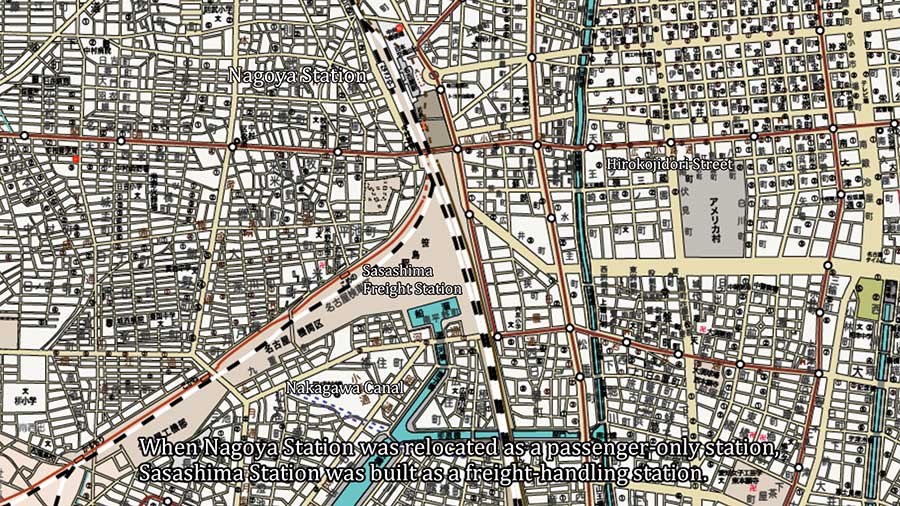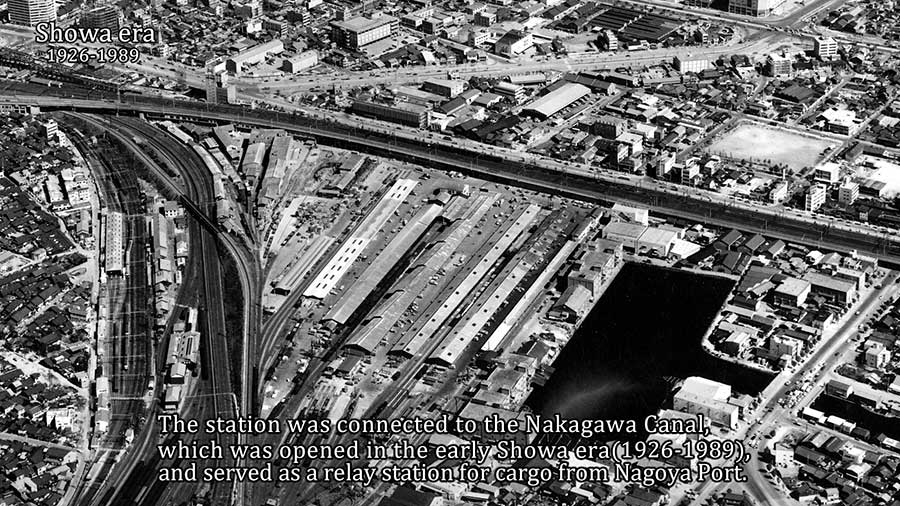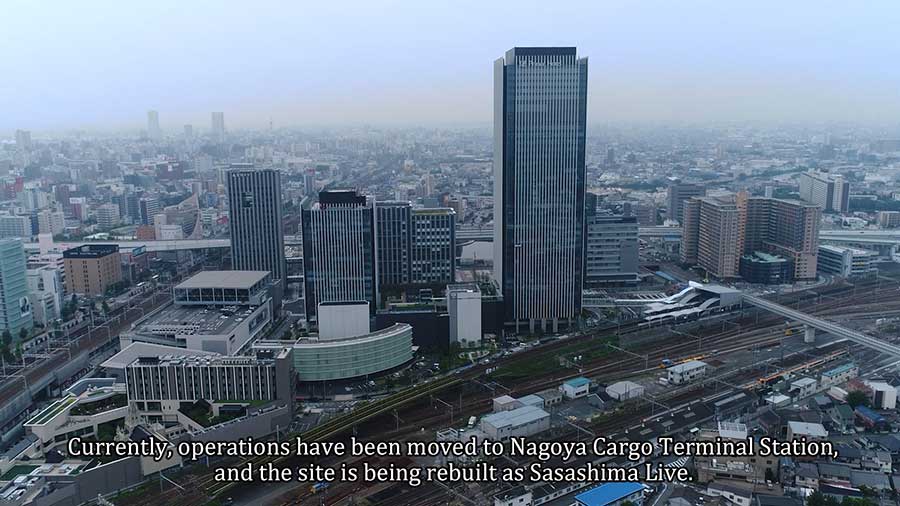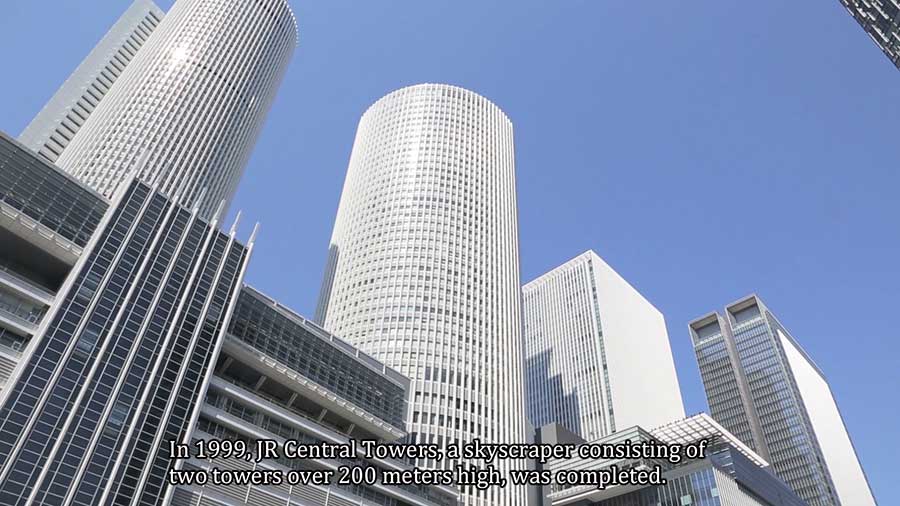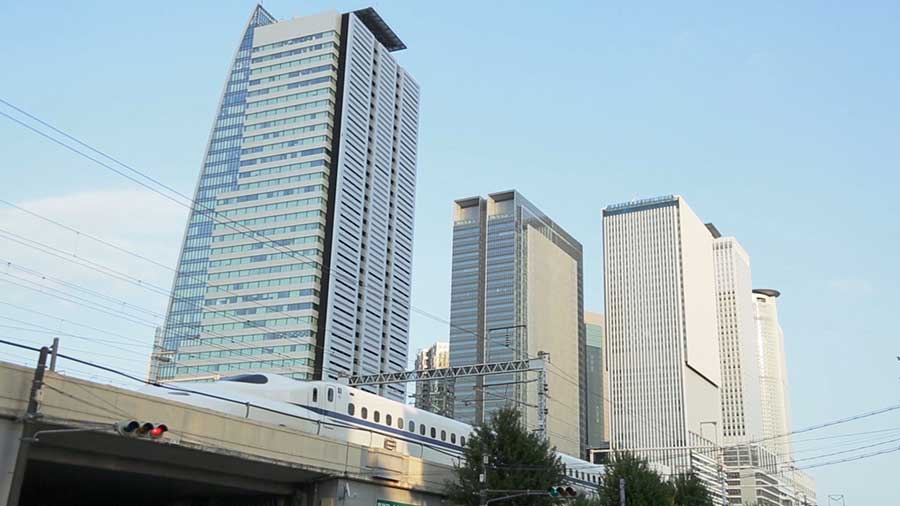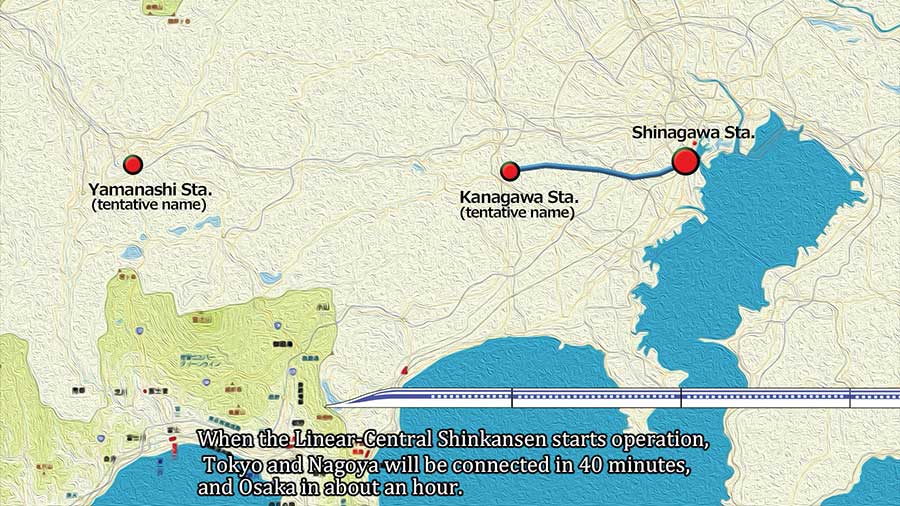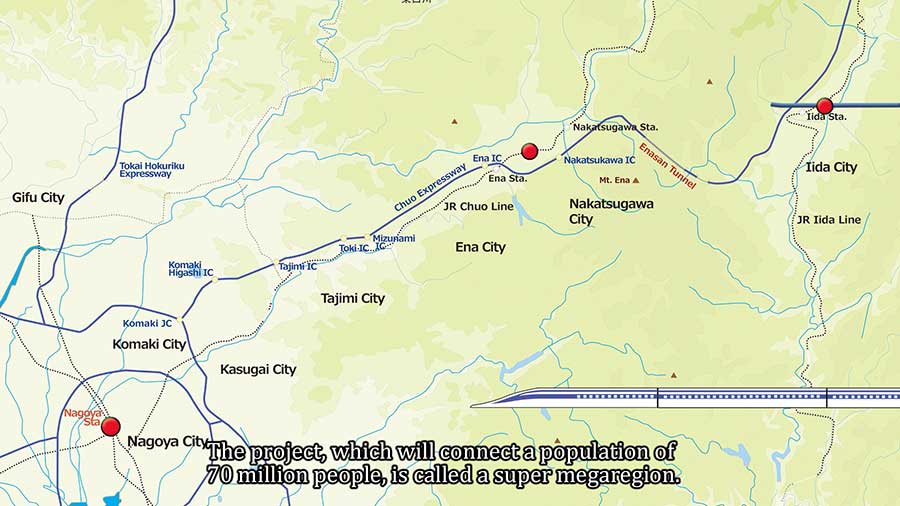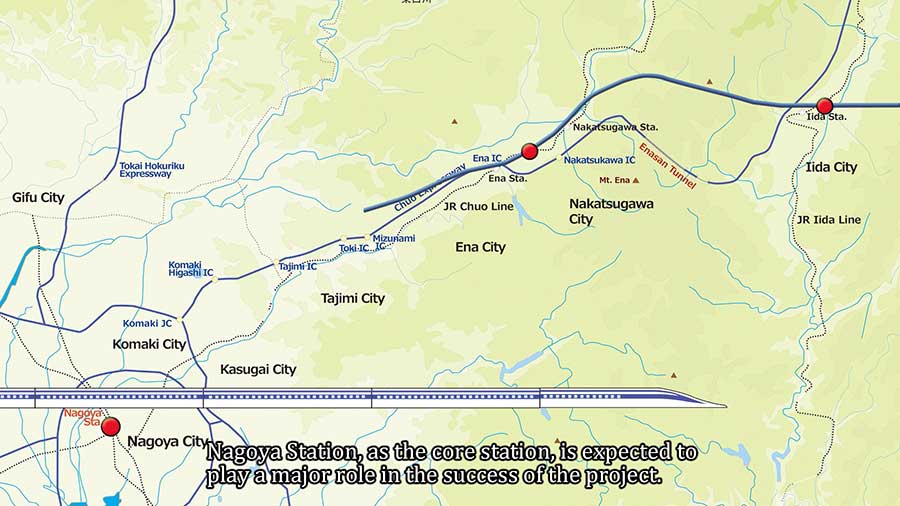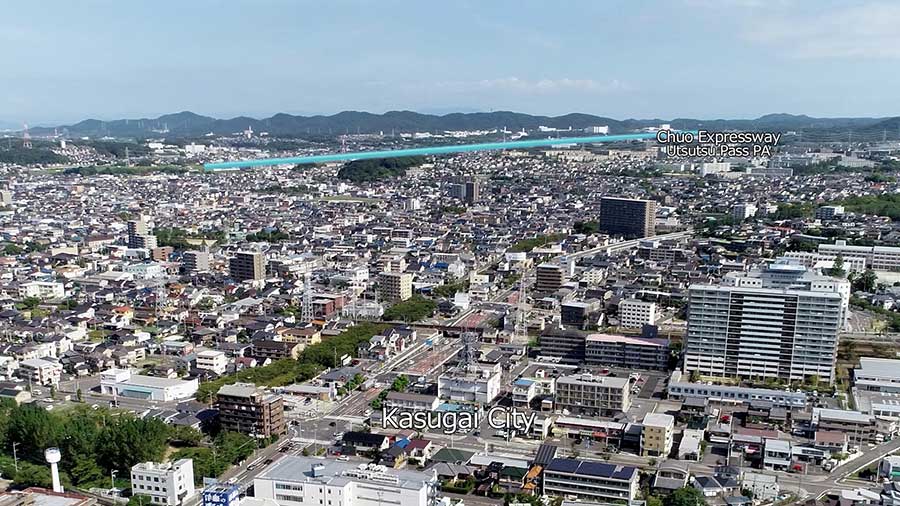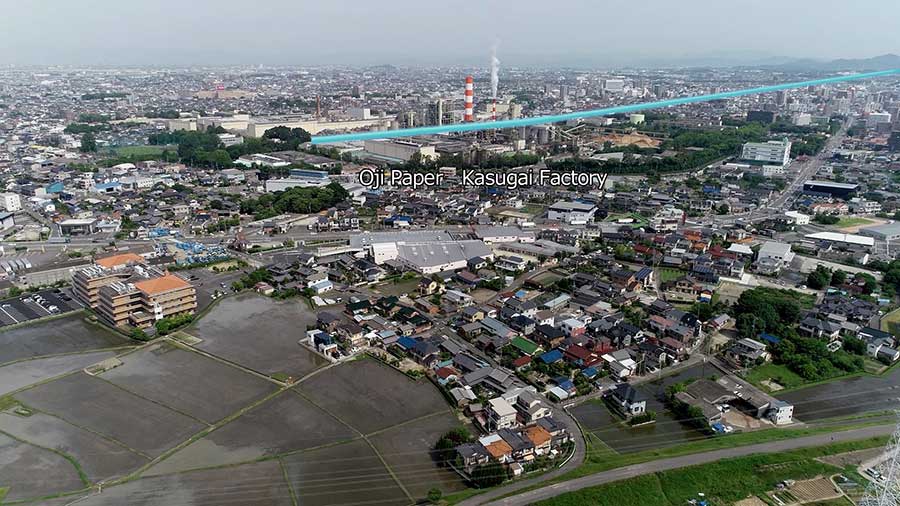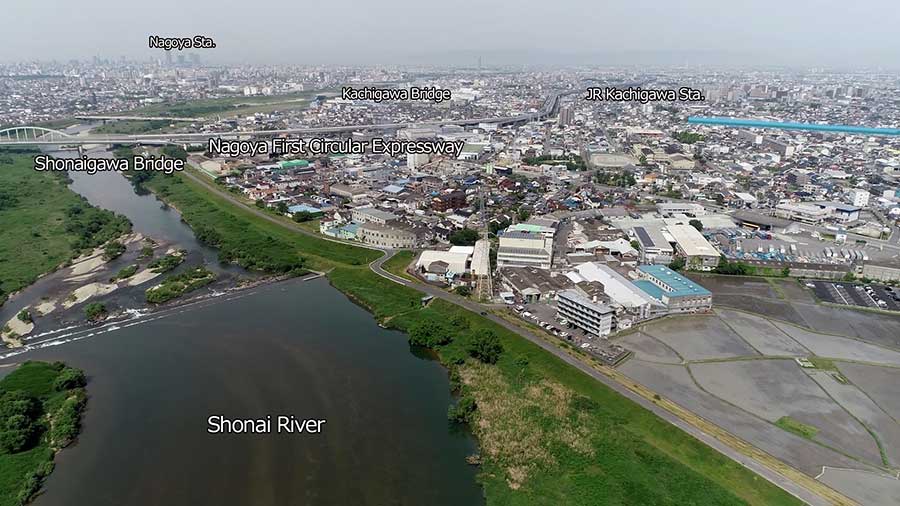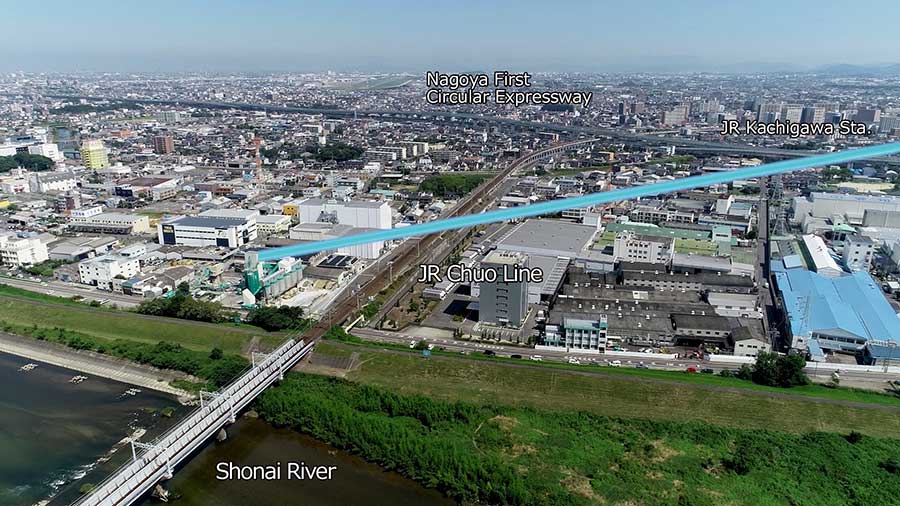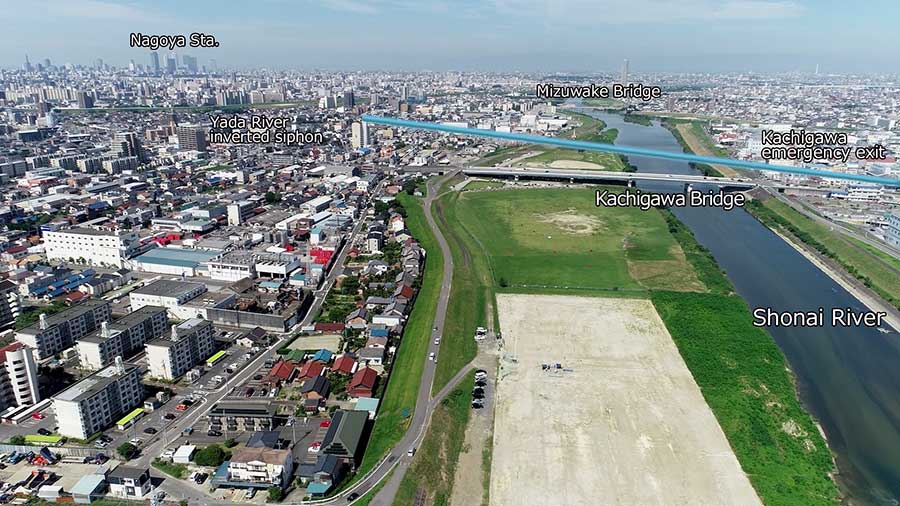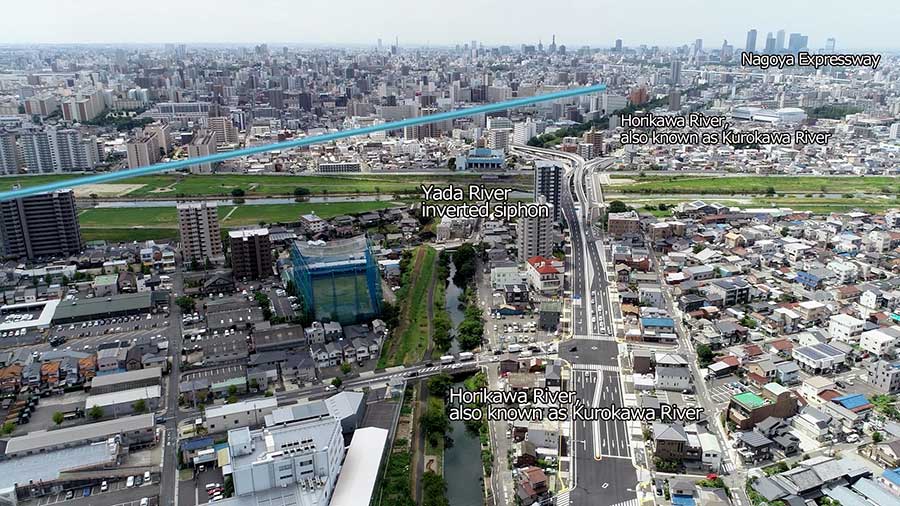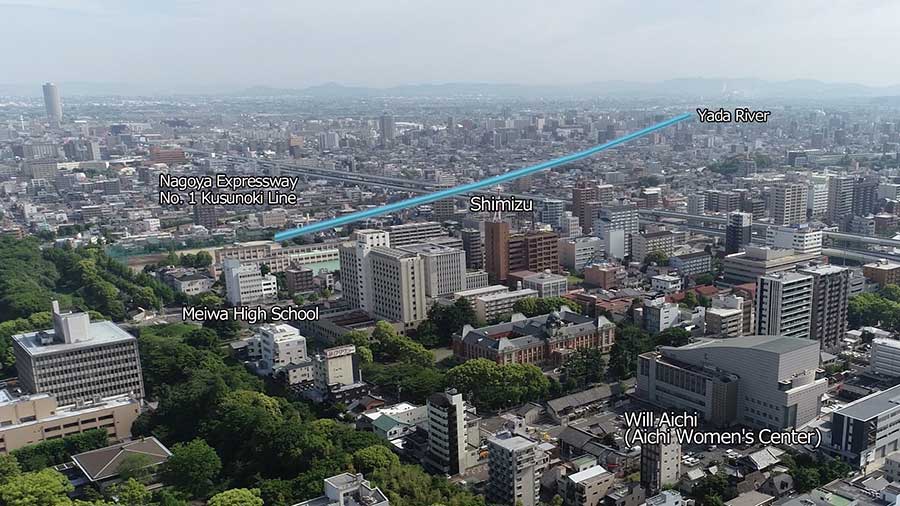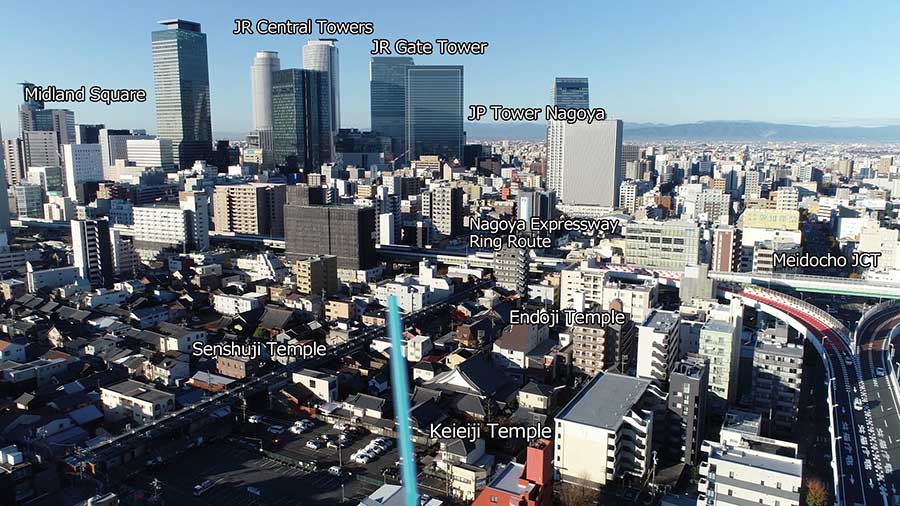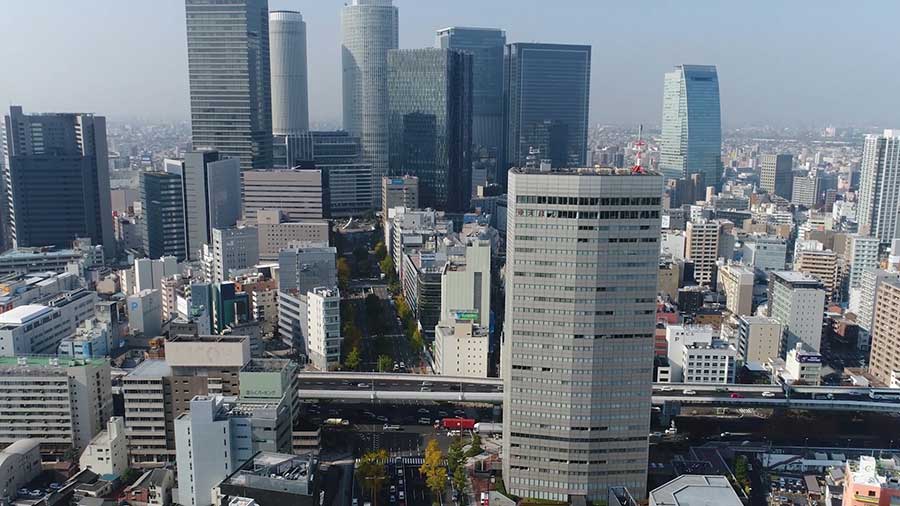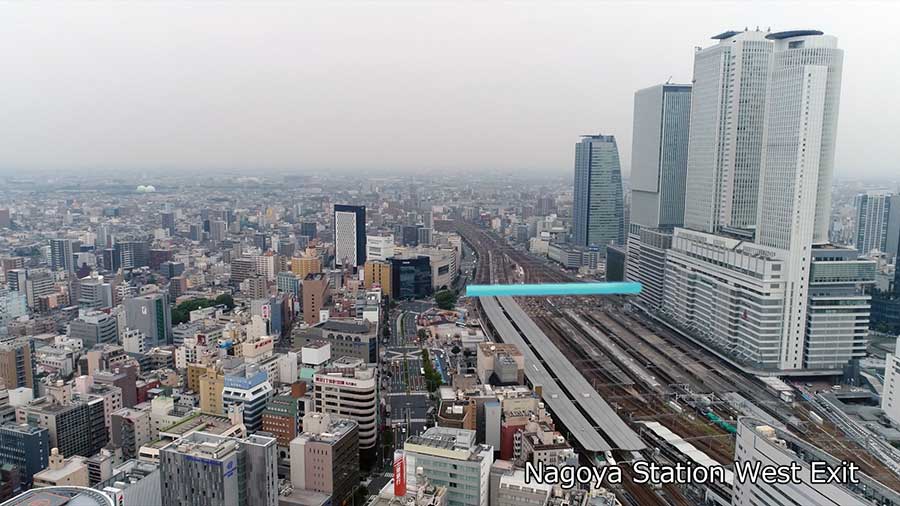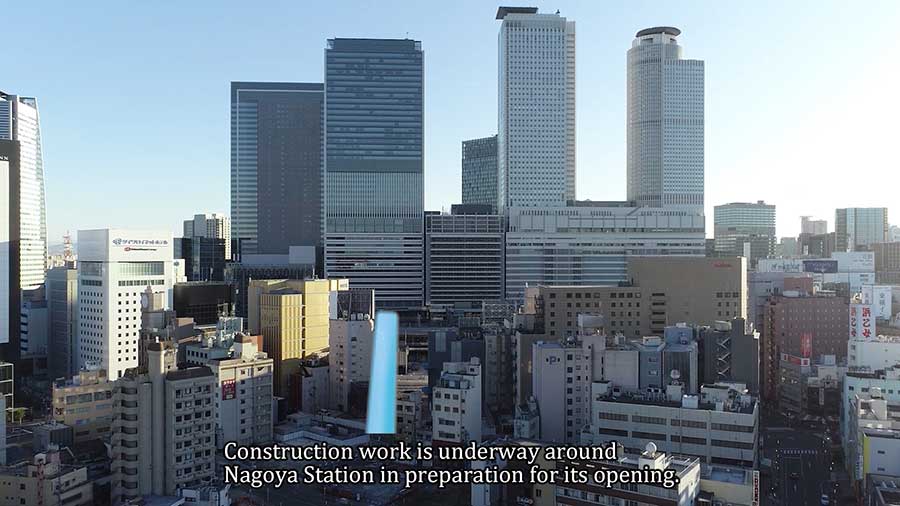Nagoya Station, Then and Now
In 1872, the first railroad in Japan was established between Shinbashi and Yokohama stations.In the Kansai region, a temporary service between Osaka Station and Kobe Station was started in 1874. In the following year, the Kyoto station and Kobe station were opened for business.In 1880, the line was extended to Otsu Station.In 1883, the government decided to build a trunk line between Tokyo and Osaka via Nakasendo for military reasons, and public bond applications began.The government decided to build the Taketoyo Line to transport goods for the construction of this line.However, this idea of going through Ogaki instead of Nagoya became a big problem for the development of Nagoya.Yoshida Rokuzai, the mayor of Nagoya at the time, objected to the government along with the prefectural governor, Kunisada Renpei.The construction of the line via Nakasendo proved to be difficult and costly due to the mountainous terrain. For these reasons, the route was changed to the Tokaido Line via Nagoya.In 1886, Nagoya Station was opened in Sasashima, which used to be a swamp and rice field.In 1889, the Tokaido Line was opened from Shinbashi Station in Tokyo to Kobe Station. At the time of its opening, there were four direct trains a day between Shimbashi and Kobe, and the journey took about 20 hours.
With the opening of Nagoya Station, Nagoya's infrastructure was developed, and Hirokoji Street was widened and extended to Sasashima.In 1889, Nagoya Ward was abolished and Nagoya City was born.In 1898, Japan's second streetcar system began operating, following the one in Kyoto. Nagoya Station and the prefectural government were connected by streetcar.In 1891, the Nobi Earthquake occurred. The station building collapsed, and was rebuilt the following year.The Chuo Line between Nagoya and Tajimi opened in 1900. To extend the streetcar line to Chikusa Station,Aichi Prefectural Office was relocated and newly built in minamibuheicho.In 1895, the predecessor of the Kansai Main Line, the private railroad Kansai Railway, entered Nagoya Station. Nagoya Station has grown into a terminal station with multiple train lines.
From the end of the Meiji era (1868-1912) to the Taisho era (1912-1926), the city of Nagoya merged with surrounding towns and villages, and in 1921, the population exceeded 600,000, making it the third largest city in Japan after Tokyo and Osaka.In the Taisho era (1912-1926), the number of passengers increased dramatically.In the mid Taisho era, the number of visitors reached 2 million a year, and by the end of the Taisho era, it exceeded 4 million.The number of train arrivals and departures exceeded 100 per day by the end of the Taisho era.Cargo to and from Nagoya Station also increased from 140,000 tons per year in 1900 to over 1 million tons per year by the end of the Taisho era.The combination of passenger and freight service was approaching saturation, and there was a strong demand for the construction of a new station.In 1934, Nagoya's population surpassed one million.To commemorate this event, the Nagoya Pan-Pacific Exposition was to be held in 1937.Various infrastructural improvements were made in preparation for the exposition.In February 1937, Nagoya Station was completed at its present location. The construction of Sakuradori, which connects the station to the city center, was also completed.
Nagoya Railroad was established through the merger of Meigi Railway and Aichi Electric Railway.After the merger, the current Mei-tetsu Nagoya Station was completed by taking over the relocated site of Nagoya Station.Trains on the former Meigi Railway line began to enter the underground station.Later, the line of the former Aichi Electric Railway was also extended and connected.
Most of Nagoya was burned to the ground in air raids by the U.S. military during the Pacific War.However, Nagoya Station survived the fire, and reconstruction work began at a rapid pace after the war.The special demand from the Korean War provided the impetus for the recovery of the Japanese economy. The development of the area in front of Nagoya Station was in full swing, and the construction of buildings had begun.In November 1957, Subway line 1 was opened. Nagoya Station and Sakae-machi were connected by subway.The reconstruction of Nagoya Castle had also begun.In 1957, the entire Meitetsu Department Store was completed. Nagoya Station started up again as the land gateway to the Chubu region.
When Nagoya Station was relocated as a passenger-only station, Sasajima Station was built as a freight-handling station.The station was connected to the Nakagawa Canal, which was opened in the early Showa era(1926-1989), and served as a relay station for cargo from Nagoya Port.Currently, operations have been moved to Nagoya Cargo Terminal Station, and the site is being rebuilt as Sasashima Live.
In 1987, with the privatization of Japan National Railways, Central Japan Railway Company (JR Tokai) was born.JR Tokai also decided to locate its head office in Nagoya, and the former Nagoya station was getting old, so it was planned to rebuild it.In 1999, JR Central Towers, a skyscraper consisting of two towers over 200 meters high, was completed.After that, a series of skyscrapers were constructed around Nagoya Station.
When the Linear-Central Shinkansen starts operation, Tokyo and Nagoya will be connected in 40 minutes, and Osaka in about an hour.The project, which will connect a population of 70 million people, is called a super megaregion.Nagoya Station, as the core station, is expected to play a major role in the success of the project.Construction work is underway around Nagoya Station in preparation for its opening.

